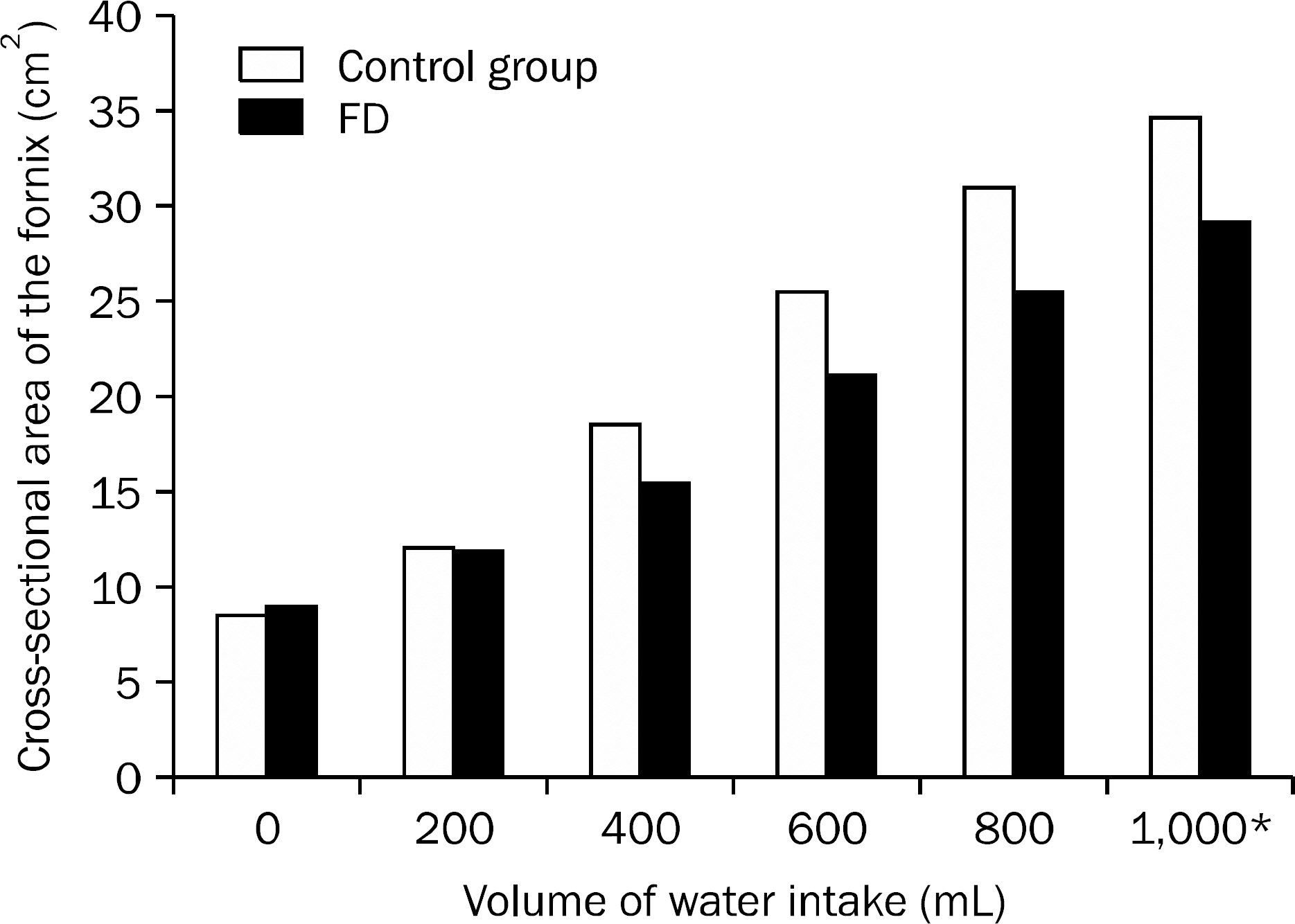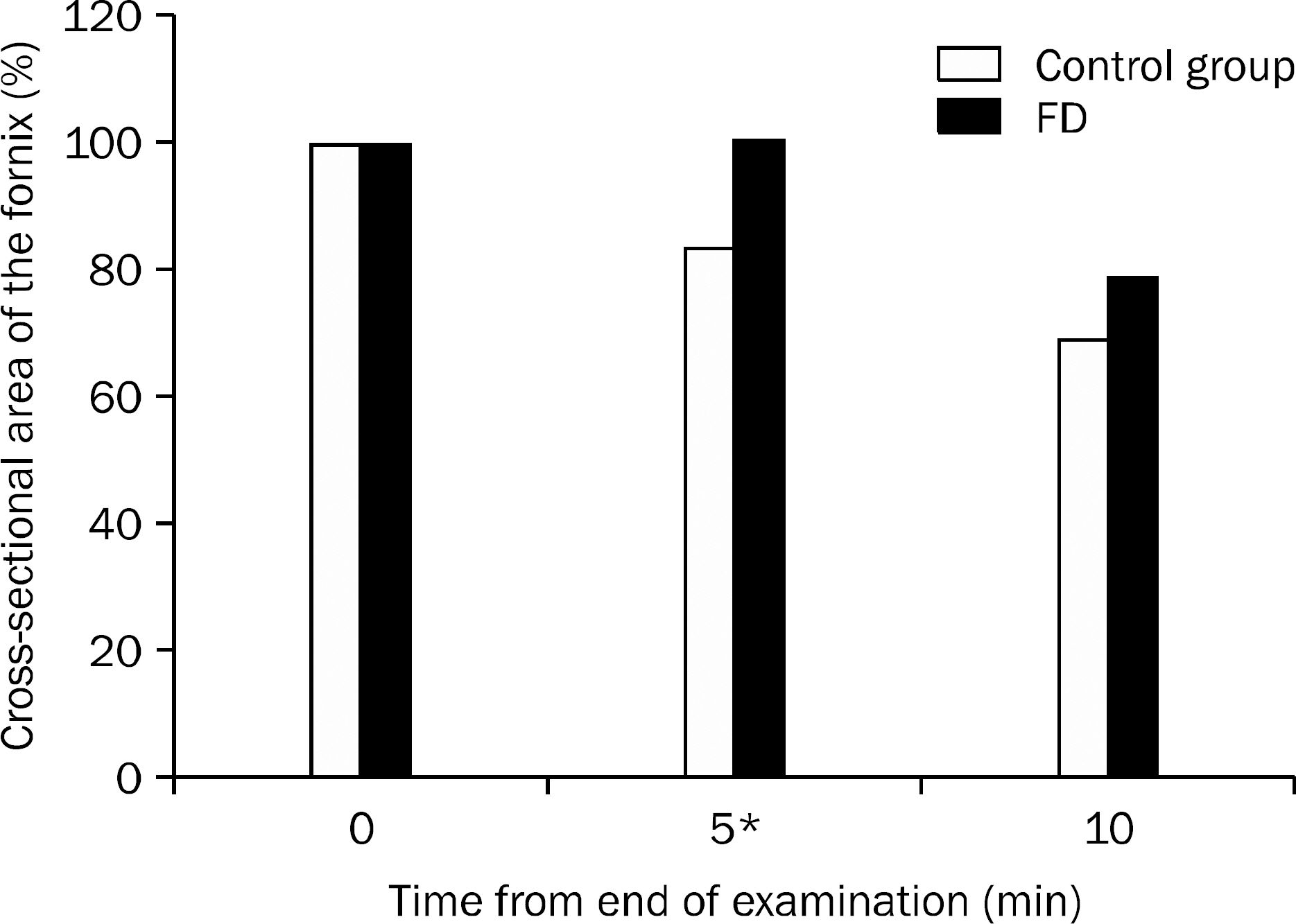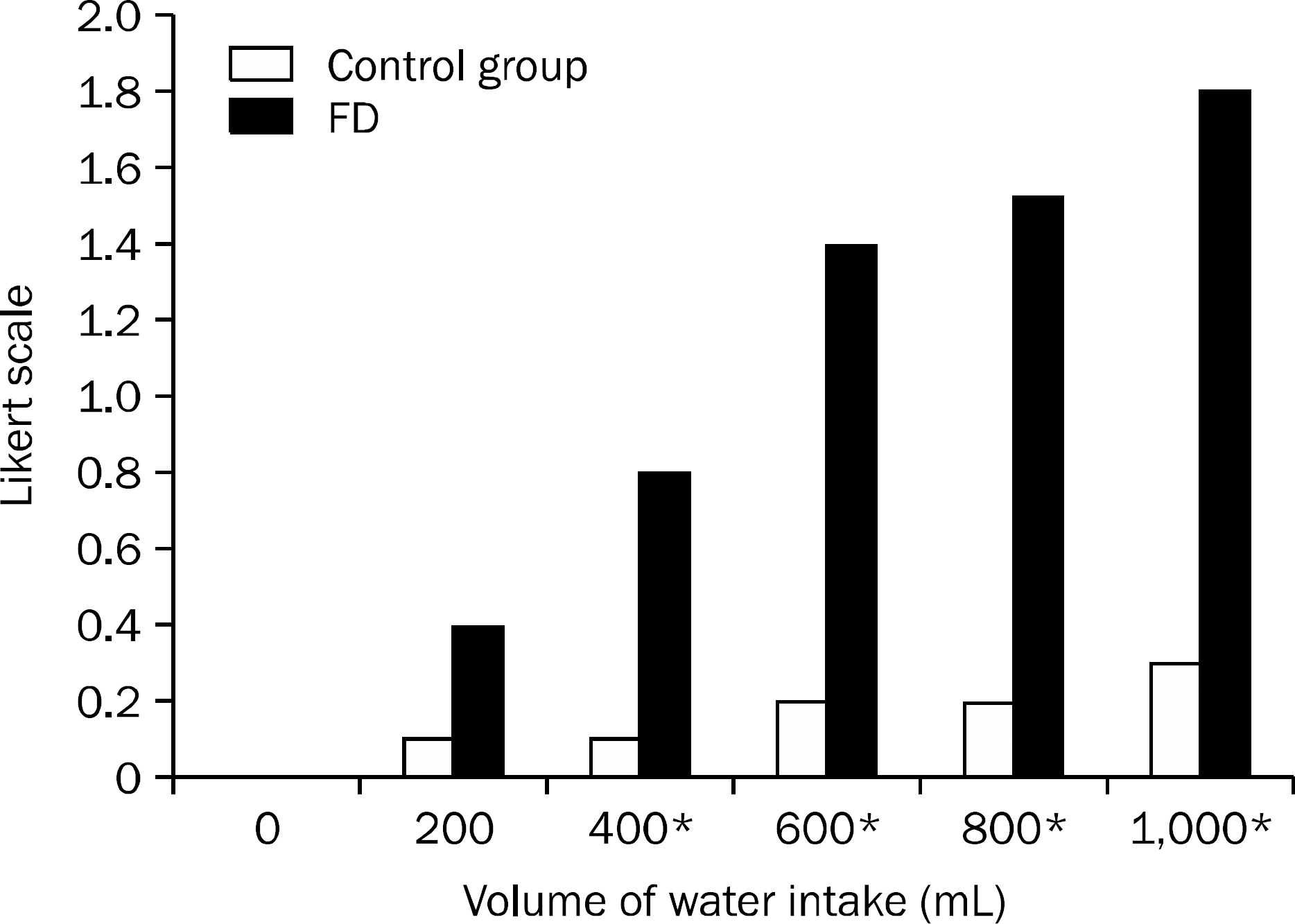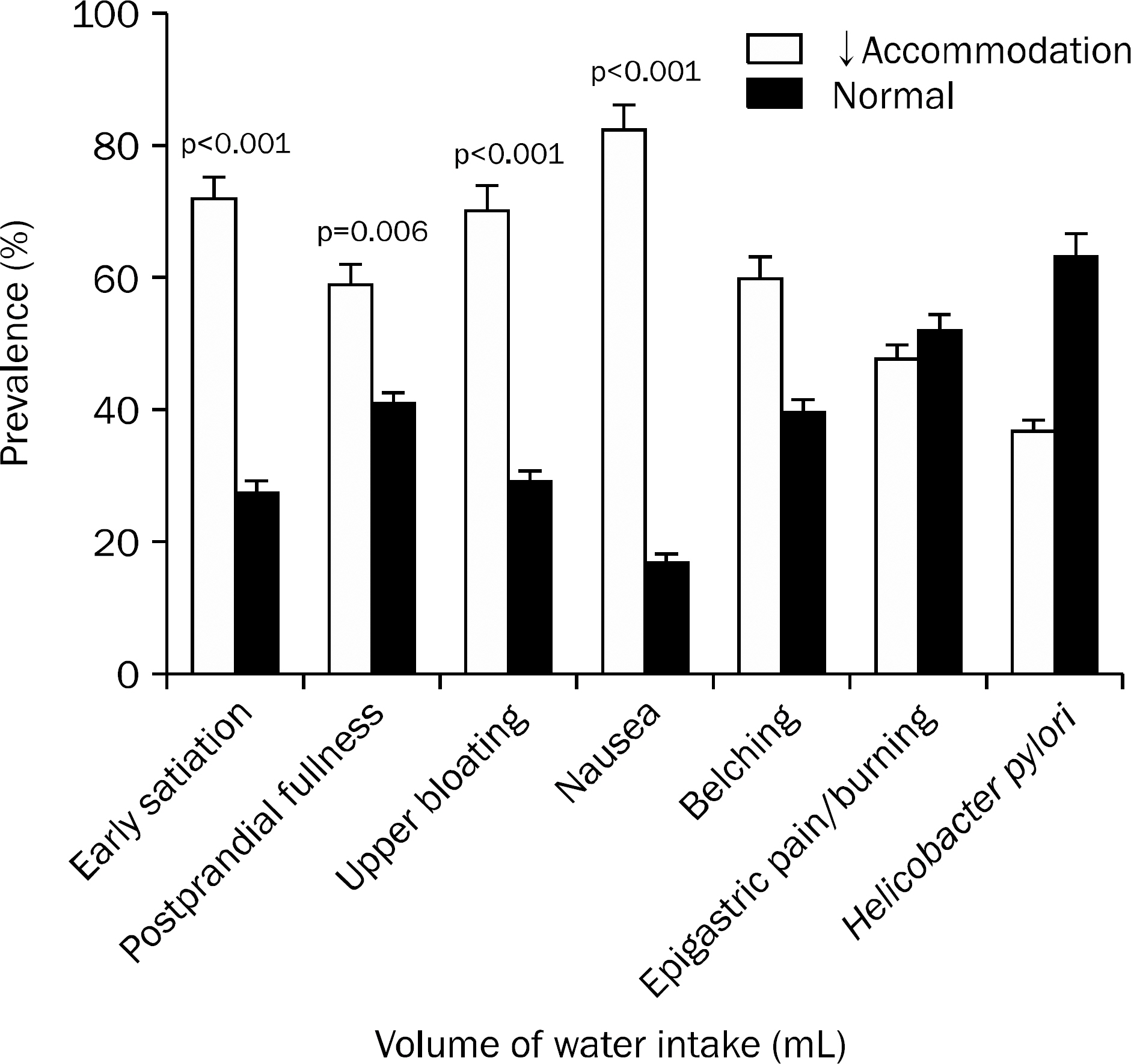Korean J Gastroenterol.
2015 Aug;66(2):92-97. 10.4166/kjg.2015.66.2.92.
The Usefulness of Water-drinking Ultrasonography Combined Test for Evaluating Patients with Functional Dyspepsia
- Affiliations
-
- 1Department of Internal Medicine, Bogomolets National Medical University, Kyiv, Ukraine. kugler2@mail.ru
- KMID: 2373320
- DOI: http://doi.org/10.4166/kjg.2015.66.2.92
Abstract
- BACKGROUND/AIMS
The major causes of functional dyspepsia (FD) are motility dysfunction and visceral hypersensitivity. Despite the large number of diagnostic tests, there are no convenient methods for evaluation of gastric functions. Therefore, this study was conducted to assess the relationship between the degree of dyspepsia and gastric accommodation, emptying, and sensitivity.
METHODS
A total of 120 FD patients that met the Rome III criteria and 30 healthy volunteers were included in this cross-sectional study. The mean cross-sectional area of the fornix was measured to investigate fundic accommodation and gastric emptying during and after water intake. During the test, abdominal symptoms were evaluated using the 4-point Likert scale.
RESULTS
The water-drinking ultrasonography combined test revealed impairment of gastric accommodation in FD after 1,000 mL of water intake, delayed emptying after 5 min of water intake and statistically significant hyperesthesia after 400 mL of water intake in the FD group compared with healthy controls (p<0.05). Postprandial distress syndrome (PDS) and overlap syndrome were independently associated with gut motor disturbances instead of epigastric pain syndrome (EPS) (p<0.01).
CONCLUSIONS
The results of the present study suggest that the water-drinking ultrasonography combined test could be used for diagnosis of gastric motor and sensory dysfunction, particularly in PDS and EPS-PDS patients. This test is easy, well tolerated by the patient and can be widely applied in clinical practice.
MeSH Terms
Figure
Cited by 1 articles
-
Probing the Utility of Ultrasonography for Assessing Degree of Functional Dyspepsia
Kyung Sik Park, Ju Yup Lee
Korean J Gastroenterol. 2015;66(2):67-69. doi: 10.4166/kjg.2015.66.2.67.
Reference
-
References
1. Suzuki H, Moayyedi P. Helicobacter pylori infection in functional dyspepsia. Nat Rev Gastroenterol Hepatol. 2013; 10:168–174.2. Vanheel H, Farré R. Changes in gastrointestinal tract function and structure in functional dyspepsia. Nat Rev Gastroenterol Hepatol. 2013; 10:142–149.
Article3. Shimpuku M, Futagami S, Tajima N, et al. Impact of eating attitude and impairment of physical quality of life between tertiary clinic and primary clinic functional dyspepsia outpatients in Japan. J Neurogastroenterol Motil. 2014; 20:506–515.
Article4. Tack J, Talley NJ. Functional dyspepsia–symptoms, definitions and validity of the Rome III criteria. Nat Rev Gastroenterol Hepatol. 2013; 10:134–141.
Article5. Tack J, Bisschops R, Sarnelli G. Pathophysiology and treatment of functional dyspepsia. Gastroenterology. 2004; 127:1239–1255.
Article6. Kato M, Nishida U, Nishida M, et al. Pathophysiological classification of functional dyspepsia using a novel drinking-ultrasonography test. Digestion. 2010; 82:162–166.
Article7. Shvets NI, Bentsa TM. [Dysmotility syndrome of the upper gastrointestinal tract in the clinical practice: diagnosis and treatment]. News Med Pharm. 2010; 323:Available from:. http://www.mif-ua.com/archive/article_print/12538.Ukrainian.8. Ivashkin VT, Sheptulin AA, Lapina TL, et al. Guidelines of the Russian Gastroenterological Association on diagnostics and treatment of functional dyspepsia. RZHGGK. 2012; 22:80–92.9. Kim DY, Delgado-Aros S, Camilleri M, et al. Noninvasive measurement of gastric accommodation in patients with idiopathic nonulcer dyspepsia. Am J Gastroenterol. 2001; 96:3099–3105.
Article10. Van Oudenhove L, Vandenberghe J, Dupont P, et al. Regional brain activity in functional dyspepsia: a H(2)(15)O-PET study on the role of gastric sensitivity and abuse history. Gastroenterology. 2010; 139:36–47.
Article
- Full Text Links
- Actions
-
Cited
- CITED
-
- Close
- Share
- Similar articles
-
- Probing the Utility of Ultrasonography for Assessing Degree of Functional Dyspepsia
- The relationship between functional dyspepsia and family function
- Efficacy of Slow Nutrient Drinking Test for Evaluating Postprandial Distress Symptom in Japanese Patients With Functional Dyspepsia
- Treatment of Helicobacter pylori infection in functional dyspepsia
- Understanding the Biliary Dyspepsia






